Big Ten And SEC Should Join Forces And Go For-Profit | Clay Travis
The NCAA is dead and college football is experiencing more rapid change than at any point in any of our lives. Essentially, the Berlin Wall -- the NCAA -- has been torn down and unfettered capitalism has arrived in major college sports. In the space of a little over a decade, we have gone from quarterbacks getting suspended for selling their autographs to quarterbacks making millions of dollars a year to play college football. The lawsuits filed Wednesday morning by the states of Tennessee and Virginia essentially declared war on the NCAA, which has served as the governing body of college athletics for the past hundred years.
I don't see any future where the NCAA has any control over the future of college football.
With a 12 team playoff set to debut this fall and a bonanza of fan interest and money set to pour into the sport, now is the time for generational stability and the creation of lasting pro-player, pro-team and pro-sport decisions to be made.
There is only one path forward that makes lasting sense and preserves the sport for those of us who love it the most: the top college football teams in America, led by the SEC and the Big Ten conferences, have to leave the existing college ecosystem and become for-profit businesses. While this would be a challenge in the short term, it would create the second most valuable sport in America behind the NFL and provide generational stability and massive growth.
Now is the time to act.
This column isn't intended to be a line by line business plan or to address every potential legal hurdle and complexity, but what it is designed to do is provide a lasting framework that would create a foundation for a robust future of college football.
And after a ton of contemplation, I'm certain it's the inevitable destination for where college football is headed. The question is just how quickly will we get there?
Here are seven foundational issues that must be addressed and analyzed to create this for-profit future.
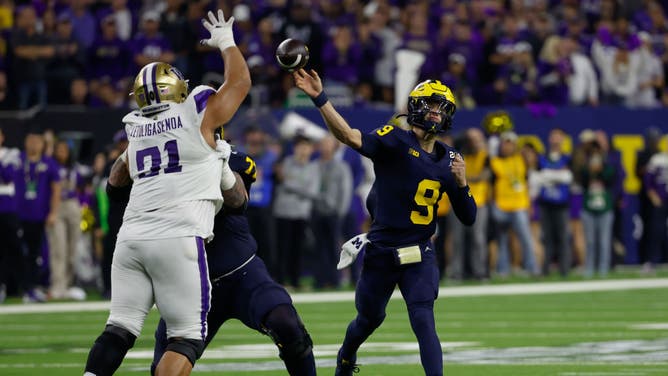
College football can be a for-profit market, but lots of things need to change first. (Photo by David Buono/Icon Sportswire via Getty Images)
1. College football's media rights are woefully undervalued.
That's because there's a piecemeal selling of all college football rights -- conferences sell their own regional packages instead of one grand media deal encompassing, for instance, the SEC and Big Ten together. (Along with top ACC and Big 12 brands, eventually, as well.)
The NFL commands $11.5 billion a year in TV rights.
College football conferences command roughly $2.5 billion a year.
That gap in revenue is indefensible, and it's a product of not combining the assets into one giant package. This is why the for-profit business makes so much sense. Like all things in capitalism, it ultimately comes down to the money that can be made. College football is leaving billions of dollars a year in potential profits on the table with its current structure.
With a new playoff debuting, college football should be worth at least half what the NFL gets, if not more. That's billions of dollars in value waiting to be unlocked if the conferences band together.
Heck, I would say the killer app is to start a streaming service and put every Big Ten and SEC game on the streaming service in the years ahead. Why do the conferences even need TV partners in the future? Why do they need cable TV networks? Why wouldn't the Big Ten and the SEC, along with other eventual college partners, just create their own college football network for fans?
College football is a huge business, the second biggest in all of sports, but it's still being run, all too often, like a small regional business.
Instead of fifty college town CEO's, there should be one big conference commissioner -- I'd nominate the SEC's Greg Sankey, personally -- and a mandate to drive revenue and profit for the benefit of everyone.
Yay, capitalism.
2. Until players are employees and able to negotiate a collective bargaining agreement, there can be no end to antitrust lawsuits against the NCAA or any other governing entity.
Right now there are twin uncertainties that are driving college coaches from the profession and creating instability in the sport: the transfer portal which has virtually no restriction on player movement and NIL deals. That twin combination has destroyed the ability of teams to plan and govern themselves intelligently.
Compare a first round draft pick in the NFL to a five-star recruit in college football.
A first round NFL draft pick has a set salary, but his contractual rights are locked in by the team that drafts him for four years. The team then has a fifth year option if they so desire. Yes, the team guarantees that first round draft pick millions, but as a result of the payment, the player is restricted from entering free agency for, potentially, five years. That allows the team to invest in the player's growth while having the security of knowing they retain the player's services for several years. A player can't suddenly elect to enter free agency and change teams after one year. The contract provides security and stability to both player and team.
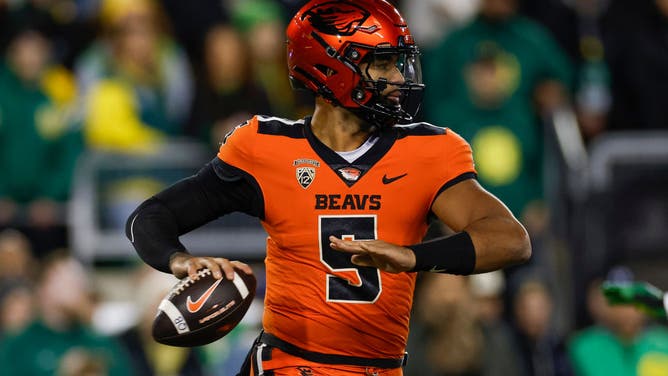
DJ Uiagalelei is just one of example of a college athlete that has transferred schools multiple times with no restrictions. (Photo by Brandon Sloter/Image Of Sport/Getty Images)
Compare that with college football, under existing rules a five-star recruit could theoretically change teams for four or five consecutive seasons, negotiating new payment terms after every season with a brand new team. Even crazier, a player might not ever have to leave "college" athletics. A top player who didn't project to be a top NFL draft pick could theoretically sue under antitrust law and continue playing while he racked up multiple graduate degrees. You could have ten-year "college" players.
That's nonsensical and indicative of a broken system.
What's more it means that college coaches have to constantly remake their rosters every year, negotiating new NIL deals yearly in the process. Put simply, this isn't tenable.
Crazier still, right now college football fans, rather than the revenue produced for the sport itself, are being asked to pay the player salaries.
Can you imagine if NFL teams made billions off TV and ticketing rights and then asked their fans to donate money to pay the players? I mean this is absolutely bonkers. The players should be paid based on the revenue they produce, not by random fan donations. (The NIL groups paying players are also ripe for sport destruction. How so? A super rich billionaire could endow an NIL with a billion dollars and just buy the top 25 players every year. This is why salary caps are actually good for sports, because they ensure that all teams have an even playing field. It hasn't happened yet, but eventually one of the NIL collectives is going to become so huge that they monopolize top player talent. A for-profit business with a CBA stops this from happening.)
But at present any restriction on players being able to change schools would be a violation of antitrust law based on the recent court precedents.
The result is that right now many top college quarterbacks are making more to play in college than NFL Super Bowl starter Brock Purdy, whose salary this year is just $870,000. Next year Purdy will make $960k and in his fourth year he'll make $996k. Some freshmen in college football will make more than Purdy will make in his fourth year in the NFL. (Don't feel too bad for Purdy, he's on track to make $200 million+ in a couple of years when he becomes a free agent, but it's illustrative of the market mess that college football has become.)
This is insane.
There's no sport in the world where it's more lucrative to be a minor leaguer than a pro.
Eventually, this competitive NIL balance will likely collapse too. The richest boosters will just buy all the top players and the sport's popularity will decline. Remember, without contracts restricting player movement, every college football player is a perpetual free agent right now.)
So what's the solution?
College football players have to become employees and negotiate a collective bargaining agreement across multiple leagues, the SEC and Big Ten for instance. The exact terms of the deal would be hammered out and the resulting collective bargaining agreement would make all players employees and eliminate all antitrust issues. (A CBA, because it is bargained for, has an exemption to antitrust law. That's how NFL and NBA teams, for instance, can get away with capping the amount they pay players.)
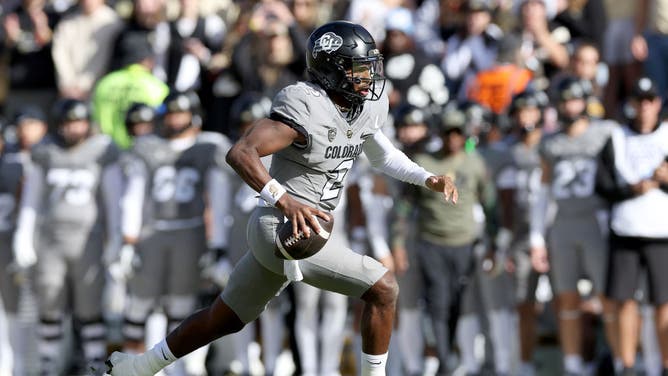
Shedeur Sanders is one of the athletes who makes more money per year than Brock Purdy and other professionals. (Photo by Matthew Stockman/Getty Images)
What would an eventual CBA look like?
That would be determined by the negotiations, but it could guarantee, for instance, all 85 scholarship players a set salary payment. In exchange players would likely give up perpetual free agency and the transfer portal. The net result would be what happens when most unions negotiate, the floor would be lifted for player salaries, but the ceiling would be lowered. That is, the very best players would make less -- LeBron has probably been worth $100 million a year, but he's capped at $50 million under the NBA CBA -- but the lesser players would get far more.
An easy place to start in negotiations would be giving players a set percentage of the overall media rights from a newly burgeoning college football rights package, replete with a 12 team playoff.
An easy fix for the transfer portal mess would be that when a recruit signs with a team, and I'm just spitballing here, they agree to be bound by a player contract for three years at that school. The "transfer portal" might allow only one player transfer for the senior year, if a player weren't electing to enter the NFL Draft. This would increase roster stability and reward coaches for identifying and developing recruits.
These CBA's could also formalize the requirements for college football employees, who would receive a scholarship and a salary as part of their CBA. The players would be expected, for instance, to maintain academic eligibility at college, refrain from criminal conduct, and conduct themselves as employees by showing up for training, treatment, practices and team meetings. If they failed to adhere to this standard, like all employees, they could be fired or face consequences from their employer.
(And, yes, players would pay taxes on their income like all employees do. I don't know why every college football fan is so obsessed with taxes, but I feel compelled to put this in the article because any discussion of paying players immediately features a dozen commenters screaming, SO THEY'D HAVE TO PAY TAXES! Yes, poor person writing from an anonymous Twitter account, they will pay taxes.)
There's also a contingent of college football fans that always says, "Well, if they get paid, I'm out! I'll stop watching!"
First, this isn't true. College football TV ratings are increasing during the NIL era.
Second, this is totally nonsensical to me.
I'm a capitalist, I want everyone to make as much off selling their talents as they can. I didn't write this article for free. I don't do radio or TV for free. Presumably none of you are doing your jobs for free. College football isn't a hobby for these players, it's their job.
Why do you care if a player has a nice car or a nice apartment?
To me, the NCAA's guiding enforcement tenet, that if you're poor and play sports you better stay poor or you aren't eligible to play sports any more is the most morally bankrupt sports argument of my life. (If you're rich, you've always been able to have a nice car or a nice apartment on campus. Your dad or mom can pay for it. As everyone reading this article knows, there are plenty of rich kids in college. The idea that the NCAA owed its entire investigative power to ensuring that poor kids stay poor despite others making billions off their sporting talents is, in my opinion, morally indefensible.)
Finally, the exact terms of the CBA could be negotiated by the teams and conferences. Every player getting paid the same amount seems the simplest and most elegant solution to me because it limits roster complexity, but maybe teams would rather have a set amount of dollars and be able to pay players as they see fit. Then each team would need a GM and quarterbacks, for instance, would make way more money than kickers.
Again, that would be negotiated, but I think the best solution is every rostered player gets the same amount.
3. Very few college athletes have true NIL value.
This is important to recognize.
The "value" from NIL -- according to my friend Shannon Terry who runs On3 and previously founded Rivals and 247 Sports, there is roughly $300 million per year being paid in NIL money to college athletes right now -- is almost completely tied to football and men's basketball, the only two sports in college where the players have a market value in excess of their college scholarships. That is, most "NIL" money right now is just direct compensation for the playing of a sport, what we would consider to be a salary in all other pro sports.
But players would not be restricted from doing endorsement deals under their new CBA. (NIL is just another name for an endorsement since an athlete using his name, image or likeness to endorse a product has been common place in pro sports for generations.)
USC's Caleb Williams did Wendy's commercials and Alabama's Bryce Young did Dr. Pepper commercials this past season. That would still be possible, the best players would be able to do endorsements just like pro athletes do now.
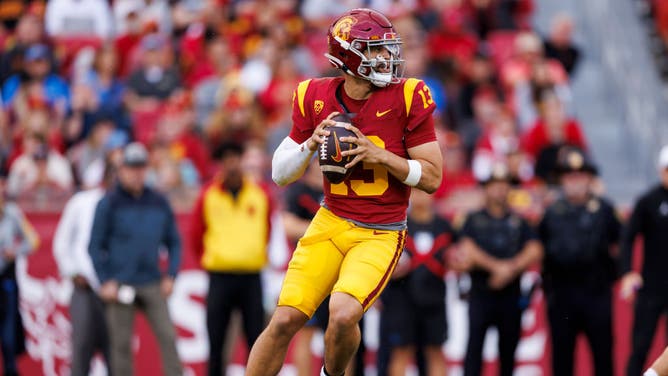
Caleb Williams was one of the athlets who made the most money off of the current NIL structure. (Photo by Ryan Kang/Getty Images)
But most players wouldn't have major endorsement value, that's just a tiny pinprick of elite talent.
And no fans would be paying for players through collectives, the media rights deals and tickets, just like in pro sports, would pay the players.
So top college football players would get their guaranteed salary through the CBA and whatever other, non CBA restricted, deals they could negotiate.
Other athletes in other college sports -- Livvy Dunne for instance at LSU in gymnastics -- would still be free to do their own NIL deals and wouldn't be covered by the CBA for college football players. Most players in other college sports would have, as noted above, limited NIL value, but they would still have the right to their name, image and likeness.
They wouldn't be implicated here at all.
4. Okay, how do the college teams get purchased?
The business gurus will look at revenue, cost and profit and determine fair market value for each college football team in the Big Ten and the SEC. Then the individual teams would be "purchased" and the money would be given to the university's to endow their athletic departments, probably, or use the cash as they see fit.
The University of Alabama's football team would be worth far more than Vanderbilt's, for instance, but this would be a function of the revenue and profit the school produces.
I believe investors are going to want to own the whole league, not individual teams.
Yes, the NFL has 32 individual owners, but if you were starting the NFL anew, I think all the teams would be owned by the same corporate entity as opposed to 32 individual owners. College football should have one single entity owner because that maximizes the business management for everyone.
There is a model where every major college football program spins off independently and is owned by individual owners, but it's more complicated than necessary. And it would create the same sort of messy realignment that we see now. Eventually, one team might decide to break off and sell its own rights.
Or multiple teams might band together and leave and start their own leagues.
Then everything is balkanized all over again.
To me, the model here is the UFC and WWE. You want to own the entire league top to bottom and control everything.
The owner of this new business would need to put billions of dollars on the table to purchase the college football teams and rights and group them together. Like all businesses of this magnitude, it's a big risk.
There are many different models under which the ownership could be controlled -- maybe individual investors have the opportunity to buy shares in the college football business. I could see that being hugely popular -- maybe it's 100% privately held.
I can see a world where Fox or Disney/ESPN end up as owners of the entire college football business I'm proposing.
I can also see a world where a smart, rich ownership group wins the business here.
The politics of this will be complicated -- likely involving governors, state legislatures and the federal government -- but, again, this is the structure that makes sense.
It's inevitable.
5. Colleges and universities would (likely) receive a negotiated percentage of the profits from the football programs to fund their existing athletic programs.
Outside of football and men's basketball, just about every college team in America loses money.
The profits from football fund entire athletic departments.
By unlocking more money, and driving profits higher, athletic departments could continue to fund their existing teams. Some schools might elect to reduce the number of teams they have, some might add more.
Football, as a for-profit business, would be pulled out of Title IX and the not-for profit athletes, that is the other scholarship athletes, would all be treated the same way they are now.
Better run athletic departments would be able to bring in better recruits and field more successful teams. Weaker athletic departments, that is, those that waste the money they get from college football teams, would struggle.
But the dollars would be paid to the university as a sort of perpetual licensing of facilities and teams in the years ahead. Combined with the purchase price of the teams, the athletic department, at least well-run athletic departments, would still be able to have many sports teams.
6. What about men's and (maybe women's) basketball going for profit?
Men's basketball is the only other team that makes money, truly, at most colleges and universities.
It could make sense down the line to pull men's basketball out of the not-for-profit rubric and align it with football, but the revenue and profit from most men's basketball programs is small compared to football.
Could a new college business that controlled the college football playoff and the men's and women's basketball rights fees and a renamed NCAA Tournament potentially allow an even bigger business to grow in the future?
Definitely.
But college football is the much bigger business imperative right now and the NCAA tournament has basketball rights tied up for years to come.
So, for right now, this business would only be pulling football from the existing college model.
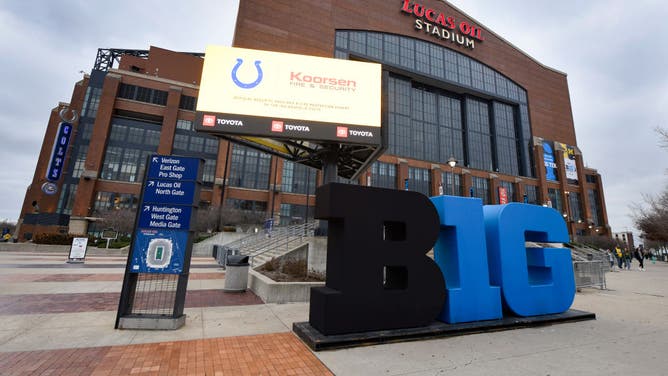
The Big 10 could hold major sway in determingin the future of college football. (Photo by Michael Allio/Icon Sportswire via Getty Images)
7. How many teams are eventually included?
That's a multi-billion dollar question that would be determined down the line.
For now, the SEC and the Big Ten have 36 members. They would all be included as the founding members of the new college football league.
Some of the Big 12 and the ACC football teams would eventually be included too, as their TV deals ended.
Eventually, there are probably no more than fifty total schools with enough college football value to belong in this new business. A lower tier of college football would still exist, but it doesn't make business sense for all of FBS to be included, the money and support just isn't there.
Again, there are many details and questions that would need to be ironed out to get this business officially organized, but the opportunity is massive and this is where the sport is going to eventually arrive.
And now is the time to make it all happen.
College football is broken.
The solutions outlined above would repair and strengthen it for generations to come.
The sooner we get to this new paradigm, the better off the sport will be.